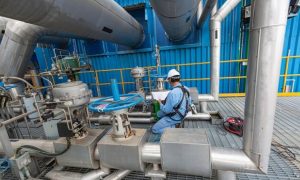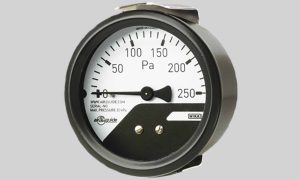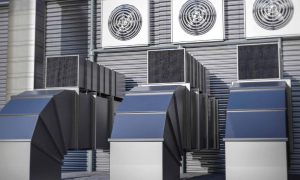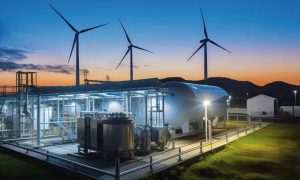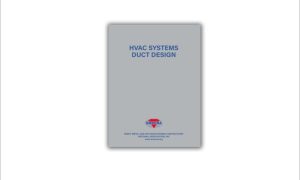Efficient HVAC systems are fundamental in reducing energy consumption and carbon emissions in various facilities. Energy efficiency requires a multifaceted approach, considering factors such as design, advanced filtration technologies, component optimisation, and integration of innovative solutions. This article explores a few perspectives on optimising HVAC systems for improved energy efficiency.
Conducting a comprehensive analysis of Heating, Ventilation, and Air Conditioning (HVAC) is crucial to conserve energy and decrease carbon emissions. HVAC systems are often the primary energy consumers in any facility, plant, or building. HVAC systems are the major focus in maintaining comfort and indoor air quality in buildings. However, their operation often consumes significant energy, contributing to both environmental impact and operational costs. To address this challenge, it is essential to implement strategies that enhance the energy efficiency of HVAC systems.
The foundation of an energy-efficient HVAC system lies in its initial design and proper sizing. Engineers must carefully calculate the heating and cooling loads of a building to ensure that the HVAC system is well-spent and undersized. Oversized systems lead to unnecessary energy consumption, while undersized systems need help to meet the desired comfort levels, increasing energy usage. Proper system design and sizing set the stage for long-term energy efficiency. Integrating advanced control systems and automation technologies is crucial for optimising HVAC performance. Smart thermostats, occupancy sensors, and programmable controllers enable precise control over temperature and airflow based on occupancy and usage patterns.
Raghuveer Singh, Senior Director of Colo-Cloud Thermal Solutions, reviews that integrating the IoT and automation into HVAC systems has fundamentally transformed the approach to managing energy consumption in buildings. Integrating machine learning, IoT, and automation has enhanced HVAC systems’ operational efficiency, reducing energy usage and associated costs.
Balancing energy efficiency and maintaining optimal thermal conditions is crucial in indoor environments, including malls and data centres. Kapil Kapoor, Founder-CTO of Vayuguard Climate Tech, foresees striking the right balance is essential to ensure cost-effectiveness, sustainability, and the well-being of occupants. The approach to achieving a balance is contingent upon several key factors. In the case of malls, considerations include the design of the facility, zoning and temperature setback strategies, the use of efficient HVAC systems, air quality management, the implementation of occupancy sensors, the adoption of renewable energy sources, and the utilisation of energy-efficient lighting.
Efficient maintenance
The most recent advancements in filtration include low-pressure, anti-microbial mechanical filters and filterless magnetic electronic filters designed to handle ultrafine particles (PM 1.0) while also having anti-microbial features, remarks Himanshu Agarwal, Director, Magneto CleanTech. These filters are rated using MERV or HEPA standards. The MERV 14 is needed to maintain clean air to control PM 2.5. Regular maintenance is essential to ensure that HVAC systems operate at peak efficiency throughout their lifespan, emphasises Raghuveer. Simple tasks such as cleaning filters, checking refrigerant levels, and inspecting ductwork can significantly impact energy efficiency. Moreover, upgrading outdated components or retrofitting older systems with modern, energy-efficient technology can substantially improve overall performance.
Niraj Shukla, Director, Global HVAC Consultants, suggests three phases: scrutinising how effectively and efficiently the system is designed, how judiciously we select the equipment, and how we operate and maintain it. He says that neglecting tasks such as proper filter cleaning, strainer maintenance, and sensor calibration renders the system ineffective in the case of an HVAC system.
Energy efficiency
Proper insulation reduces heat transfer, preventing the need for excessive heating or cooling. Energy-efficient windows and doors with low-emissivity coatings minimise heat gain or loss, creating a more stable indoor environment. Dr. Vishal Garg, University Chair Professor, Plaksha University, notes that the focus should be reducing the load, addressing components such as fans, pumps, and control algorithms, and optimising chiller efficiencies. Instead of solely focusing on individual components, it is crucial to adopt a holistic perspective when striving for energy savings. People often assess efficiency on a component-by-component basis, assuming that a collection of efficient components will inherently result in an efficient system. A well-designed, properly controlled system with less efficient equipment can achieve commendable efficiency, whereas assembling the most efficient components may not guarantee the desired overall efficiency.
Air curtains
Air curtains, an effective technology, enhance building energy efficiency. Installed above entrances create a barrier of air, preventing the exchange of indoor and outdoor air. This barrier acts as thermal insulation. By minimising the loss of conditioned air, air curtains contribute significantly to maintaining a consistent indoor temperature. This, in turn, reduces the workload on HVAC systems, leading to energy savings and increased operational efficiency, making air curtains an essential component in achieving sustainable and energy-efficient building practices.
Air curtains solely generate positive high pressure. The unseen air barrier is a deterrent for insects and larger dust particles at the entrance of a building. Its efficacy is most pronounced when doors are frequently opened and closed. Himanshu highlights that improper installation can lead to air leakage and reduced air conditioning efficiency.
Customising HVAC system
Customising the HVAC system ensures accurate sizing and configuration that aligns with the particular environment, avoiding energy waste from oversizing or under-sizing. Customised solutions are crafted per the distinct demands of each project, allowing the freedom to choose efficient components that meet the data centre’s power usage effectiveness (PUE) requirements. This approach enables minimising power consumption during both peak and partial loads. Such systems can also be deployed as unique solutions across similar data centre locations, capitalising on fast deployment and streamlined supply chains. This strategy ultimately leads to reduced costs and energy consumption.
Based on the age, design characteristics, and arrangement of their existing HVAC systems, property owners and data centre facility managers have the potential to improve the energy efficiency of their HVAC systems significantly. This improvement can decrease energy consumption, lower operational expenses, and reduce environmental impact. Several initiatives and measures can be adopted to enhance the efficiency of cooling systems. Integrating renewable energy sources can further improve the sustainability of HVAC systems. Solar panels, geothermal heat pumps, and wind turbines can provide clean energy to power HVAC systems, reducing dependence on conventional electricity grids.
Designers must exercise careful equipment selection, avoiding oversizing or under-sizing equipment ratings. During system design, emphasis should be placed on choosing equipment that can operate efficiently under both full and partial load conditions. Also, thorough testing and commissioning processes are crucial to ensure optimal performance and output from the HVAC units. Furthermore, implementing comprehensive maintenance programs for HVAC systems can greatly expedite the achievement of energy efficiency.
Energy saving and the latest in code
The Bureau of Energy Efficiency made a positive move, which mandated a maximum indoor temperature of 24°C from 2021. Considering that each 1°C increase in summer temperature typically results in a 6 percent increase in energy consumption, it was necessary. People often kept their indoor temperature at 25°C or higher, but the government’s restriction to 24°C has led to approximately 24 percent energy savings.
Ajaz Kazi, Head – MEP, Reliance Industries Limited, says added, the Energy Conservation Building Code (ECBC) is taking a step further by developing more stringent star ratings, including ECBC Plus and ECBC Super Plus. The draft is in progress, and once these measures become mandatory, there’s an expectation that compliance will improve. In India, relying solely on voluntary initiatives can be challenging; introducing mandatory regulations will likely drive more widespread adherence.
The star labelling system, particularly in the residential sector, is an obvious and effective measure, according to Dr. Vishal Garg, University Chair Professor, Plaksha University. Simplifying the process for consumers, the star rating provides a straightforward indicator – more stars denote higher efficiency. This simplicity aids buyers in making informed decisions without delving into complex technical details, such as the materials used in components.
Integration of technologies
Investing in high-efficiency HVAC equipment is a direct and effective strategy for reducing energy consumption. Energy Star-rated systems and components, such as variable-speed compressors and electronically commutated motors, offer superior performance compared to their conventional counterparts, says Raghuveer Singh. Integration is a significant challenge, especially in India, where many HVAC installations see the HVAC system commissioned while Building Management System (BMS) commissioning lags for years. Incorporating AI can assist in data analysis and predicting system behaviour to enhance control and efficiency. Ajaz adds that incorporating IoT into the system design should be an integral part of the process. Often, the conventional approach involves designing the system first and then considering the addition of IoT elements. However, “Embedding IoT within the initial design can enhance our understanding of the intended outcomes.”
By adopting these strategies, building owners and operators can reduce energy consumption and create more environmentally friendly spaces. Optimising HVAC systems is a crucial step towards a greener and more sustainable future as the world continues to focus on mitigating climate change and achieving energy efficiency goals.
====================
Himanshu Agarwal, Director, Magneto CleanTech
“Regular replacement, as specified by the manufacturer, depending on the application, is necessary for mechanical air filtration.”
Niraj Shukla, Director, Global HVAC Consultants
“Neglecting tasks such as proper filter cleaning, strainer maintenance, and sensor calibration renders the HVAC system ineffective.”
Raghuveer Singh, Senior Director Colo/Cloud Thermal Solutions, Vertiv.
“Investing in high-efficiency HVAC equipment is a direct and effective strategy for reducing energy consumption.”
Kapil Kapoor, Founder-CTO, Vayuguard Climate Tech Pvt. Ltd.
“Striking the right balance is essential to ensure cost-effectiveness, sustainability, and the well-being of occupants.”
Ajaz Kazi, Head – MEP, Reliance Industries Limited.
“The Energy Conservation Building Code is further advancing by developing more stringent star ratings, including ECBC Plus and ECBC Super Plus.”
Dr. Vishal Garg, University Chair Professor, Plaksha University.
“The star rating provides a straightforward indicator – more stars denote higher efficiency, thus simplifying the consumer process.”
Cookie Consent
We use cookies to personalize your experience. By continuing to visit this website you agree to our Terms & Conditions, Privacy Policy and Cookie Policy.


